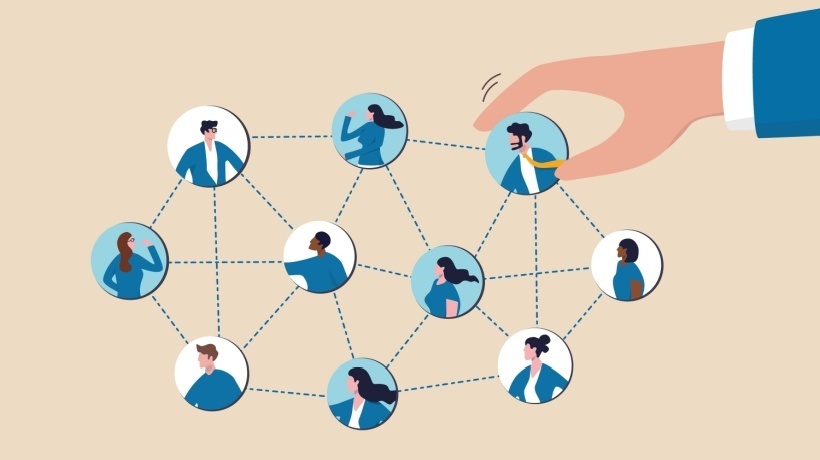The Ultimate Guide To HR Strategy Development
Any talent optimization effort must start with aligning your people and business strategy. However, having a clear people strategy is crucial to alignment. A thorough plan that synchronizes an organization's HR procedures and policies with its overarching business objectives is known as an HR strategy. It frequently entails creating and putting into practice procedures that maximize hiring, training, and retaining talent in line with overarching corporate objectives. By 2025, creating a successful HR strategy will need to be a forward-thinking process that considers new developments like Artificial Intelligence (AI), flexible work schedules, and a renewed emphasis on worker well-being.
Important Components Of An HR Plan
A solid HR strategy addresses both specific HR tasks and general business requirements. Among the several use cases are the following:
- Recruiting and retaining talent
Techniques for keeping high staff retention rates and luring excellent talent. - Career advancement and mobility
Professional development programs guarantee that workers have clear routes to achievement. - Offboarding and onboarding
Organized procedures that facilitate the seamless integration of new personnel and the efficient departure of outgoing staff. - Benefits and compensation
Competitive packages, meet the needs and goals of the business, and draw and keep people. - Efficiency of operations
Simplifying HR procedures to cut expenses and boost output.
These components act as the foundation of a strategic HR approach, assisting companies in coordinating their human resources with long-range business objectives and cultivating a positive and effective work environment.
The Advantages Of An HR Plan
As previously said, HR strategy plays a crucial role in promoting organizational performance by guaranteeing that HR procedures are in line with corporate objectives. Let's examine how in more detail:
1. Better HR Practices And Outcomes
With the help of an effective HR strategy, teams may regularly analyze and enhance their HR policies. This ensures that issues are handled promptly, improving HR practices and increasing output.
2. Increased Retention And Engagement Of Employees
A well-designed HR strategy raises employee engagement by creating a work environment that meets the needs and desires of employees. Higher levels of engagement result in improved employee performance and retention rates.
3. Developing The Workforce And Attracting Talent
The two primary objectives of strategic HR practices are to develop current employees and attract new talent. By maintaining a strong and competent workforce and corporate culture, this dual focus guarantees that the firm has the competencies to meet present and future problems.
4. Enhanced Output
An HR strategy increases operational efficiency by optimizing HR processes and aligning them with business needs. Improved performance measures throughout the company show this increase in productivity.
5. Reduced Interruptions To Business
A successful HR strategy includes plans for managing transitions, such as when employees leave the company. HR can minimize disruptions and ensure business continuity by implementing robust onboarding and offboarding protocols.
Role Of Technology In HR Strategy
Effective HR strategy is shaped and implemented in large part by technology, especially Artificial Intelligence. Efficiency and data-driven decisions are crucial. By incorporating cutting-edge tools into your HR procedures, you may turn conventional approaches into dynamic, efficient operations that improve results for your company.
1. Automate Processes
HR professionals can concentrate on more strategic tasks by automating tasks like managing payroll, organizing interviews, and reviewing resumes. This automation ensures more regular and dependable results by expediting procedures and drastically lowering the possibility of human error.
2. Data Analysis
Conduct data analysis to find patterns and offer useful information. Large volumes of employee data can be sorted through AI algorithms, which then provide recommendations that help HR teams make better decisions regarding workforce planning, employee engagement, and talent management.
3. Eliminating Human Errors
Human errors may be eradicated by automating repetitive tasks and enhancing data analysis. This would reduce the likelihood of mistakes that could impact the organization's operations and ensure that decisions are based on reliable information.
Creating An HR Strategy
The first step is to make sure your HR strategy is in line with your company's mission, vision, and values. The organization's purpose is outlined in the mission statement, its long-term goals are outlined in the vision, and its guiding principles for culture and decision-making are embodied in the core values.
1. Gap Analysis
The next stage is to perform a gap analysis after you have matched your HR strategy with the organization's mission and strategic view. This entails assessing the present competencies and skills of the HR department and the talent (i.e., employees) to prepare and forecast future demands. Identifying the gaps between the current situation and potential actions to accomplish the organization's long-term human resource management goals is the primary motive.
- SWOT analysis
This framework focuses on strengths, weaknesses, opportunities, and threats and is frequently used for gap analysis. You can use this to find out where the HR department needs to make improvements or where there might be new opportunities. You may frequently take advantage of this to assess how your company stacks up against competitors by comparing it to others. - Emerging trends
Researching future trends, such as generative AI, flexible work arrangements, and the increased focus on employee well-being, is essential as part of the gap analysis.
2. Implementing The Strategy
Once the holes have been identified, it's necessary to create your HR objectives to deal with these problems and set standards for gauging how well your plan is being implemented.
- SMART objectives
SMART stands for specific, measurable, achievable, relevant, and time-bound, and it is a widely used framework for HR digital transformation. You can ensure that your objectives are specific and achievable by using this framework, which is essential for efficient project management. - KPIs
Key Performance Indicators, or KPIs, are crucial measurements for evaluating how well your HR strategy is working. KPIs will assist you in monitoring your progress and assessing whether your objectives are being fulfilled. Remember that your KPIs could change as the company's objectives do, so evaluate them frequently and make the necessary updates.
3. Execute The Strategy
Put your plan into action as soon as you have everything you need. After implementation, it's critical to continuously evaluate how well your HR strategy is being carried out. This entails tracking your progress using the KPIs you have chosen and modifying as needed to maintain its constant efficacy.
And don't be afraid to change your strategy if something isn't working. Your HR strategy must be adaptable enough to take advantage of new opportunities and problems as they arise since the business environment is always changing.
Examples Of HR Strategy
Let's examine some examples of how HR may link its procedures to the objectives of the company. Here are five instances of effective HR strategies:
1. Talent Acquisition
To address the company's goal of hiring more talented individuals, your HR team starts a targeted recruiting drive to acquire top talent from top institutions. They visit campus job fairs, collaborate with educational institutions, and advertise on social media to recruit top prospects.
2. Employee Engagement
To maintain high levels of satisfaction and retention, your HR staff implements a quarterly pulse survey program. Your team conducts brief, anonymous questionnaires that ask employees about their experiences and perceptions. HR can utilize the comments to pinpoint areas for improvement and devise tactics to boost employee engagement.
3. Learning and Development
Your company recognizes the lack of a critical ability. Consider project management, which impedes the ability to execute projects on time. HR finds this gap and provides upskilling training to all present employees to "raise the bar" on this competence without having to open the budget for additional personnel.
4. Compensation
Employee performance is turning into a significant issue for your leadership team. They aim to give your employees a boost at the end of the quarter, half, or year. In light of this, HR implements a pay-for-performance model in which a percentage of an employee's salary is dependent on particular performance indicators. All staff members receive clear communication about this strategy, which aims to inspire exceptional performance.
5. Employee Retention
Your company is having retention issues. Workers are requesting greater flexibility because they no longer want to work in an office setting, or they are quitting. HR creates and manages a hybrid working program that aims to increase employee liberty by allowing them to work from home on occasion.
Conclusion
To bring the organization's overall plan together with the people who can make it happen, today's HR leaders are the driving forces and champions. The first step in doing this is developing a clear and intentional HR strategy. Despite the time commitment, developing and implementing an HR strategy can provide significant benefits by coordinating HR's operations with the organization's objectives.








